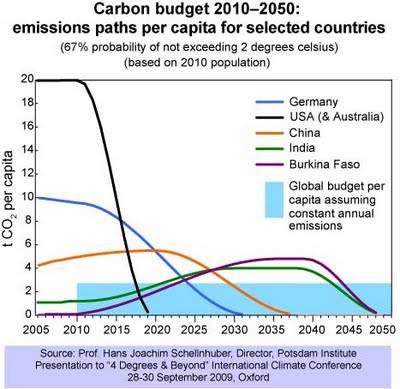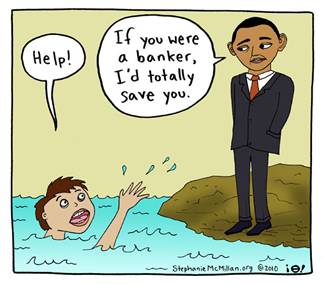Jun 13
20192
Celebrity [Capitalism | Humanitarianism | Neoliberalism], Neo-Liberalism and the Defanging of Feminism, Social Engineering, Whiteness & Aversive Racism
5G Climate Emergency to Save Capitalism Climate Strikes Economic Growth Extinction Rebellion NPIC
The New Suits of Capitalist Developmentalism: The New Green Period of Capitalism and its Ecological and Citizen Avant-garde
May 21, 2019
By Miquel Amorós
[*Translated from Spanish to English via DeepL translator – Original version in Spanish here.]
The new green period of capitalism and its ecological and citizen avant-garde.

10 Eco-Friendly Luxury Fashion Brands – Armani [Source]
Xiuhtezcatl Martinez – Barneys The Window. Photographed by Roe Ethridge / Styled by Brian Molloy / BOGLIOLI K2 Wool Hopsack Two-Button Suit / COMME DES GARÇONS PLAY Men’s Chuck Taylor 1970’s High-Top Sneakers [Source: Barneys New York]
The “energy transition” is but one aspect of the “economic transition” towards ecocapitalism, which, starting from the wild (neoliberal) incorporation of nature into the market, now reaches a phase where mercantilization will be regulated by corporate and state mechanisms. It is an industrial, financial and political operation of great importance that is going to change everything so that nothing changes, so that everything remains the same.The new technologies introduced after 1945, in the postwar period, (manufacture of cements, fertilizers, additives and detergents, more powerful engines, additives, thermal power stations, “atoms for peace”, etc.) were the factors that triggered the plundering of resources, the emission of pollutants and metropolitanization, exponentially increasing the power of transnational corporations. The economic growth became a destructive element of first order, but also, in the major cause of social stabilization, of a much greater efficiency than the unions or the workers parties. Consequently, developmentalism came to shape the policies of all kinds of governments. Employment was the worker’s only means of gaining the status of consumer, motorist and inhabitant of the periphery, so that the creation of jobs then became the primary objective of the “political class”, both right-wing and left-wing. The immediate interests of the wage-earning masses integrated in the market were aligned with those of the businessmen and the parties, to the point of firmly opposing any ecological corrective that endangered growth and, consequently, jobs. Ultimately, “dying of cancer is preferable to dying of starvation,” as some said. Unfortunately, workers have been strong supporters of business continuity, urbanization and parliamentarism, not caring about the negative impact this could have on their environment, their freedom or their lives. That is why the ecological conscience has crystallized almost exclusively in sectors that are inactive or almost so, such as academics, neo-rurals, precarious, students or pensioners. The fight against noxiousness has before it a social barrier that is difficult to overcome as long as the defence of the workplace is a priority for the majority of the population; if the contradiction is not overcome, the defence of the institutions will take precedence over the defence of the territory and the autonomy of the struggles.It is up to the state to channel the protests, encourage the formation of a pragmatic ecological elite and pave the way for the new green capitalism, if necessary by promulgating a “climate alarm state”.
Faced with a politically and socially blocked situation, the international ruling class takes the initiative by trying to direct the long march of the techno-industrial economy towards profitable “sustainability” for its own benefit and without real opposition, either by eliminating old jobs, or by creating new ones. The destruction continues and even increases, but it is certainly about saving capitalism, not the planet. Extractive ecology produces profits even in the short term; however, markets are not strong enough to initiate a process of “green” reconversion, nor are technological innovations alone, in view of which the first steps depend largely on the State. It is up to the state to channel the protests, encourage the formation of a pragmatic ecological elite and pave the way for the new green capitalism, if necessary by promulgating a “climate alarm state”. As a result, the ecological crisis – which today is presented as a climate issue – becomes trivially political. Meanwhile, the environmental movement is infiltrated by agents of the multinationals and bought with funds of various origins, resulting in a political network of influences at the service of a new kind of capitalism. The same thing happened with the NGOs. At that moment, the purge of extremisms is necessary for the transformation of the green party of decomposition into an instrument of the dominant order. The message of moderation obedient to the little belligerent slogans would not reach the manipulable masses if the anti-system “fundamentalists” were not isolated as soon as possible, or as the informal hierarchies of ecologism-spectacle say, “bridged”.

The movement against climate change has given rise to a registered “brand”, Extinction/Rebellion, which covers the environmentalist flank of left-wing citizenry, giving it arguments in favour of state mediation of the crisis. Those who appeal to the state certainly cannot be branded as “radicals,” since while they are against “extinction,” they are not against capital. Nor against any concrete responsible; one of its principles reads as follows: “we avoid accusing and pointing at people, because we live in a toxic system”. No concrete individual (no leader) can be considered guilty of anything. For a climbing mentality, not all leaders, not all capitalists, are equal, and ecological reforms can even be beneficial to the majority. They are potential allies and benefactors. Thus, the declared objectives of eco-citizenship do not go that way. They limit themselves to pressuring governments to force them to “tell the truth to the citizens”, to take “decarbonizing” measures foreseen in the “energy transition” and to decree the creation of “supervising citizen assemblies”, true political springboards for the arrivists. Their weapon: the non-violent mobilization of 3.5% of the “citizens”. No revolutions, because they imply violence and do not respect “democracy”, that is, the system of parties and ranks. They do not want to put an end to the capitalist regime, they want to transform it, making it “circular” and “carbon neutral”. We will not overlook the fact that the majority of waste is irrecyclable and that the production of “clean” energies implies the consumption of enormous quantities of fossil fuels. The professionals of citizen ecology do not want to destroy the State either, the great tree under whose shadow their personal careers thrive and their placement strategies work. The ecological crisis is reduced by this captive ecologism to a political problem that can be solved by the heights thanks to a Roosevelt-style Green New Deal: a new pact for the global economy between the world’s ruling class, the political bureaucracy and its environmental advisors that imposes measures for the reduction of polluting emissions and the storage of atmospheric carbon dioxide that the multiple conferences on climate change have failed to impose. Something extremely suspicious, like everything that comes from the system. The “dual” citizen strategies are “symbiotic”, not ruptured. Ecosystems would be restored by harmonizing conflicting interests from within. Duality consists precisely in collaborating (acting in symbiosis) with the institutions on the one hand, and mobilizing the catastrophe-sensitive masses on the other. However, the mobilizations are nothing more than a spectacular display of purely symbolic support. They do not aspire to much, as they do not question the status quo, not saying a word about the symbiosis of governments to those who are pressured by markets, growth or globalisation.
It has been proven that since the Johannesburg summit in 2002, if not before, the capitalist world is aware that its uncontrolled functioning produces such a level of destruction that it is in danger of collapsing. It is more than evident that despite the resistance to regulation by countries whose stability and influence depend on hard extractivism or unhindered development, capitalism as a whole has entered a green developmental phase and is trying to establish controls (Agenda 21, creation of the Green Climate Fund, fifth IPCC report, Paris Agreement, the 24 different COPs). This explains the epidemic of realism and opportunism that has taken over the ecological media “in action” to the point of provoking an avalanche of demands for employment in the political-administrative field. The militants do not want to close their doors, especially when there is a good remuneration, so that all the ideals are kept in their pockets. In truth, it is not only the capitalists who would benefit from a state of alarm. The new subsidized ecologism follows in the wake of “green” developmentism based on “renewable” industrial energies, and sustains the alarmist leaders of capitalism against the negationists. All their efforts are devoted to adjusting the industrial and consumerist way of life with the preservation of the natural environment, despite the fact that the results have not been flattering until today: greenhouse gas emissions, far from being reduced as established by international agreements, have reached record figures. With the optimism of a newly enlightened novice, they want economic growth, necessary for the survival of capitalism, and the territory, necessary for the conservation of biodiversity, at least in appearance, to be marvelous, no matter how much the global temperature continues to rise and the climate is degrading. Incomparable advantages of the symbiotic method and the reformist narrative!
Pentagon Fuel Use, Climate Change, and the Costs of War, Neta C. Crawford, Boston University, June 12, 2019
Those responsible for global warming and pollution, and those responsible for precariousness and exclusion are the same, but those who fight them are often not. They are two battlefields, the one of imbalance and the one of inequality, which do not finish converging and not because a cohort of vocational bureaucrats appears under the stones, trying to carve out a future for themselves by acting as an intermediary. Aspiring leaders have their days numbered because ordinary people lose their meekness when their means of subsistence are affected and they no longer allow themselves to be domesticated with the ease of days of abundance in less aggressive climates. The weakness of world-capital lies not in the climate, not even in health, but in supplies. The day when the techno-industrial system – either from the markets, or from the State – stops satisfying the needs of a large part of the population, or in other words, when due to the climate or any other factor the supply fails, the era of insurrections will come. A failed system that hinders the mobility of its subjects and puts them in immediate danger of starvation is a corpse system. It is probable that in the heat of the protest, community structures will be recomposed, fundamental to ensure the autonomy of the revolts. If civil society succeeds in organizing itself on the margins of institutions and bureaucracies, then ecological struggles will converge with wage struggles, as reflected in the praxis of a unified social conscience. And that slogan heard in the French rebellion of the “yellow vests”: “end of the month, end of the world” will reveal all its meaning.
Miguel Amorós
Talks on 12 May 2019 at the book exchange fair in L’Orxa (Alicante) and on 18 May at the Biblioteca Social El Rebrot Bord, Albaida (Valencia).












